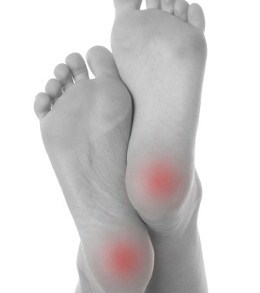Metatarsalgia is a form of neuralgia which often affects runners and athletes. This article discusses the line of treatment for this condition.

Metatarsalgia is a condition which is marked by pain and inflammation in the ball of the foot. In this condition, the nerve that runs between the third and the fourth metatarsal bones (bones that connect your ankle to your toes) gets inflamed, giving rise to pain. With every step, this nerve is pushed together between these bones and is rubbed, pressed, and irritated constantly, without any relief. It may be caused due to intense physical activities, wherein your feet are impacted by running and jumping. Wearing ill-fitting shoes may also give rise to this condition. The other causative agents for this condition are hammertoe (contracted toe), which is developed due to the usage of high heels. Overweight people and people affected by bunion at the base of the big toe are also prone to this condition. Stress may also break the metatarsal bones and lead to metatarsalgia.
Treatment
Simple measures may be practiced to treat this condition. The initial line of treatment includes RICE (rest, icing, compression, and elevation) therapy.
Rest
Taking ample rest may keep you away from your favorite sports activity for some time; however, it is important for the condition to heal faster. Low-impact exercises such as swimming may help keep your body fit till you recover completely. You may continue to perform some stretching and lower-body strength training, as far as the pain permits.
Ice
Using an ice pack on the affected area for 15 to 20 minutes, thrice a day may also help alleviate pain. To protect your skin you may wrap the ice in a thin towel, or you may also make use of frozen peas or corn.
Compression
Using elastic compression bandages may help alleviate the swelling.
Elevation
Keeping the foot on at an elevated level will also help reduce the swelling.
Following are some other treatment options:
- If the pain is unbearable, you may take over-the-counter pain relievers. These medicines may help alleviate the pain and inflammation.
- If you are slightly overweight, then you will have to take measures to lose weight.
- Footwear has an important role to play in the healing process. If you wear tight shoes, which have thin soles and high heels, then they may exert pressure on the affected area and further aggravate the condition. At the same time, you consult your physician for choosing a footwear appropriate for your foot type.
- You may use insoles made from cork, plastic, rubber, or a gel-like substance inside your shoes to help cushion shock. This may also help reduce the pain.
- There are metatarsal pads available off-the-shelf, which when placed in the shoes just ahead of the metatarsal bone help minimize the stress from the painful area.
- If the insoles have not proved beneficial to improve the condition, your doctor may recommend arch supports, depending on your foot type. You will come across off-the-shelf arch supports in various sizes that may be fitted immediately. For more durable arch supports, you may also get them custom-made from a plaster cast of your foot. These will be more beneficial than the off-the-shelf arch supports as they are customized to your requirement.
In rare but severe cases, surgery may be required. The surgeons might remove the nerve associated with the painful condition. The other surgical options include reshaping the joints and modifying the irregularly-shaped bones.
Disclaimer:
This Buzzle article is for informative purposes only, and should not be used as a replacement for expert medical advice.


 Metatarsalgia is a condition which is marked by pain and inflammation in the ball of the foot. In this condition, the nerve that runs between the third and the fourth metatarsal bones (bones that connect your ankle to your toes) gets inflamed, giving rise to pain. With every step, this nerve is pushed together between these bones and is rubbed, pressed, and irritated constantly, without any relief. It may be caused due to intense physical activities, wherein your feet are impacted by running and jumping. Wearing ill-fitting shoes may also give rise to this condition. The other causative agents for this condition are hammertoe (contracted toe), which is developed due to the usage of high heels. Overweight people and people affected by bunion at the base of the big toe are also prone to this condition. Stress may also break the metatarsal bones and lead to metatarsalgia.
Metatarsalgia is a condition which is marked by pain and inflammation in the ball of the foot. In this condition, the nerve that runs between the third and the fourth metatarsal bones (bones that connect your ankle to your toes) gets inflamed, giving rise to pain. With every step, this nerve is pushed together between these bones and is rubbed, pressed, and irritated constantly, without any relief. It may be caused due to intense physical activities, wherein your feet are impacted by running and jumping. Wearing ill-fitting shoes may also give rise to this condition. The other causative agents for this condition are hammertoe (contracted toe), which is developed due to the usage of high heels. Overweight people and people affected by bunion at the base of the big toe are also prone to this condition. Stress may also break the metatarsal bones and lead to metatarsalgia.